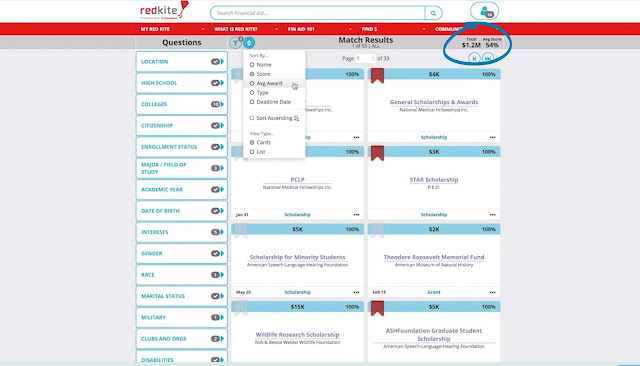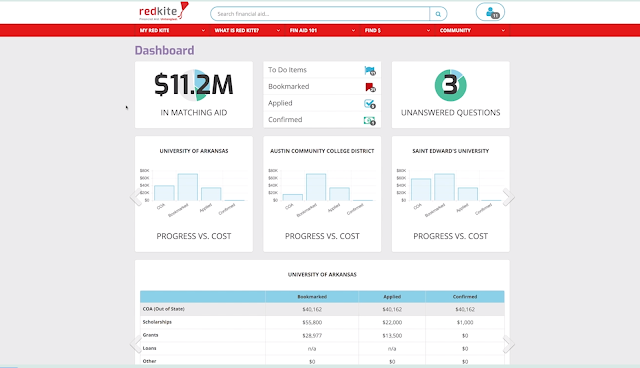"Show Me the Money!" It's All About Demographics
An important fact that many students, parents, counselors and teachers fail to understand is the critical role individual demographics play in eligibility for free money for college. Since there are tens of thousands of different scholarships, grants, fellowships and institutional forms of aid out there for US college-bound teens to navigate, the odds have been slim indeed that they would identify, locate, apply for and receive these free monies to offset tuition costs. That is, until now.
Leveraging Red Kite's smart algorithms within the GATE College System platform, students can now quickly and easily know who has free cash ready to allocate to support their college studies on the basis of many relevant factors assessed in those determinations. Some funds, for example, are exclusively interested in funding incoming freshman Latina students who have one or more parents with a military background and who are interested in majoring in engineering. Scholarships exist for left-handed students and other eclectic options, and all can be fun to explore for a high school student trying to determine if paying college is a path they can navigate.
Since this solution captures important facts about each student using it, a comprehensive list of places to apply for aid populates as they use the step-by-step process. Not only can they then click to take a deeper dive into what's required to apply, but GATE's Essays trainings (created by noteworthy educator Ethan Sawyer, College Essay Guy) ensure that submissions have strong, well-written content to improve strategic positioning and secure winning outcomes. In fact, GATE's entire G-A-T-E sequence of Grades-Applications-Testing-Essays wraps around the Red Kite tool so nothing needed is left out of the equation in supporting high schoolers.
Here's a peek at a sample opportunity a student might see within the platform. Note: they not only receive a full description of the purpose and parameters of the fund, but also identifiers of whether this is a need-based or merit-based opportunity, application deadlines, renewability, and even the level of recent competition with number of recent applicants indicated.
A wide variety of student profile aspects that come into consideration here include: location, high school, colleges being applied to, citizenship status, intended major/field of study, interests, gender, race, club and organization affiliations, disabilities, and more. With digital accessibility to this information, students--particularly those from disadvantaged backgrounds--gain an important competitive advantage. Not only can they secure more confidence that they can afford to aspire to a college education, they can do so with a proven holistic solution that simplifies and encourages the process.




Comments
Post a Comment